College tuition costs pertains to the charge that a student is obliged to compensate for enrolling and going to public or private colleges.
Returns generated by tuition costs are utilized in making up for various operating outlays of the institutions which are not covered by tax payers, in addition to most expenditure related to education and further relevant expenses.
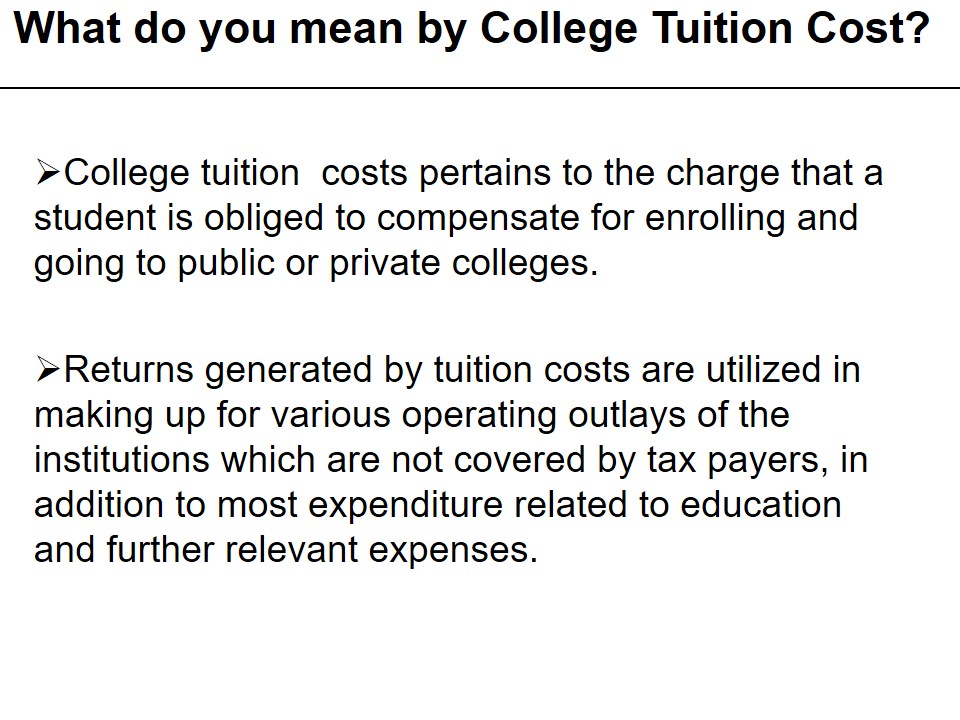
College Tuition Cost Inflation
At the end of the 20th century the nation witnessed a rise in college tuition costs at a faster rate than the rate of inflation. The reasons for this were:
- Escalated costs of Education and relevant overheads;
- Abridged need-based grants financed through tax payer subvention;
This resulted in:
- Higher education costs;
- Dropping out of many students, in particular African-American and Hispanic students;
- Controversies over equal openings for all in the U.S. education system;
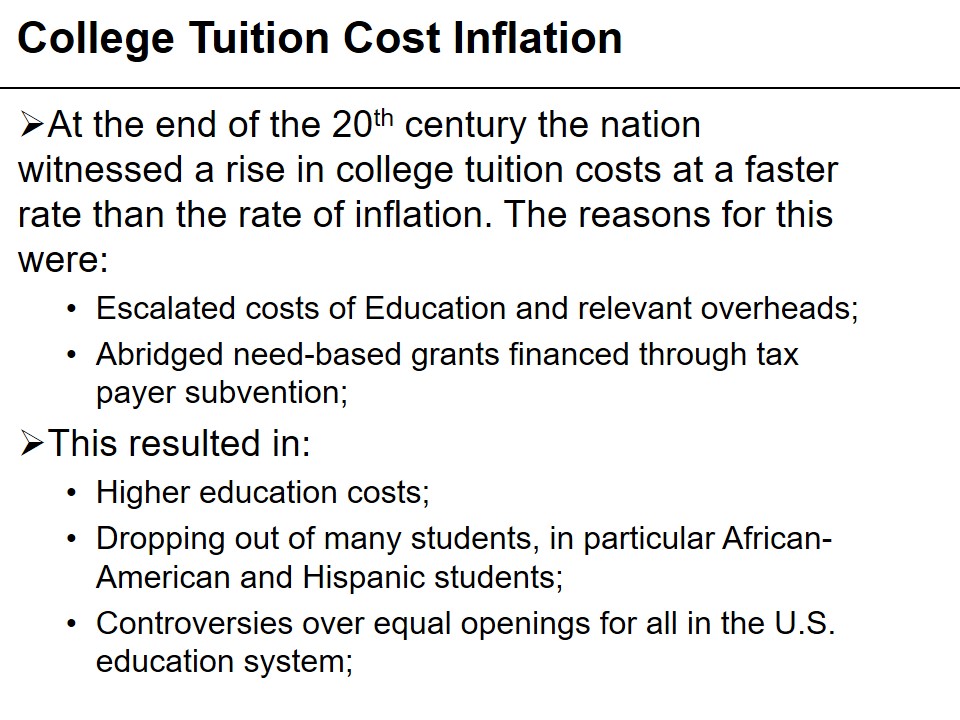
Trends in Tuition Inflation
Short term solutions are out of sight as this has become a prolonged phenomenon dating at least 25 years back.
Between 2002 and 2003 Tuition underwent:
- A 24 percent hike in the state of Massachusetts;
- A 20 percent raise in the states of Texas, Missouri and Iowa;
- Comparable figures in all other states;
This enforced a set back in meeting the demands for higher level learning in the nation.
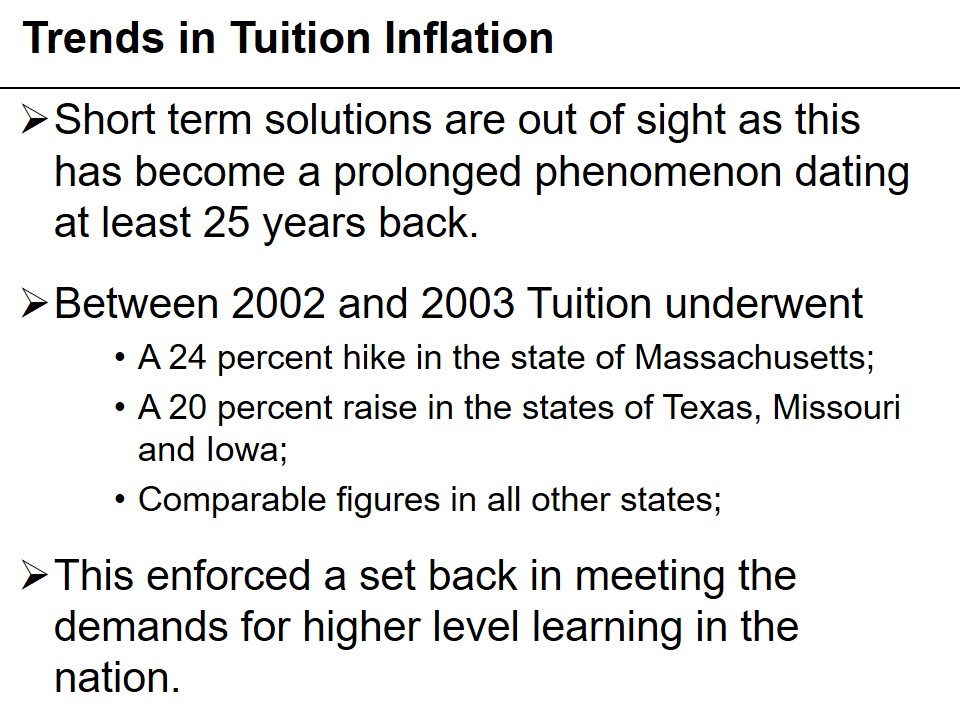
Tuition and Student Enrollment
- Student enrollment is critical for the institutions.
- Student enrolments directly influence:
- Revenues earned;
- Degree of support from governments;
- Stability of the institution;
- Drawing and retaining students became a priority for institution authorities during the 70’s till the 90’s.
- Revenues from tuition do not suffice for the functioning overheads of an institution.
- To cover up their total expenditures, they require subsidies from other avenues such as:
- Government agencies;
- Alumni;
- Business corporations;
- Friends.
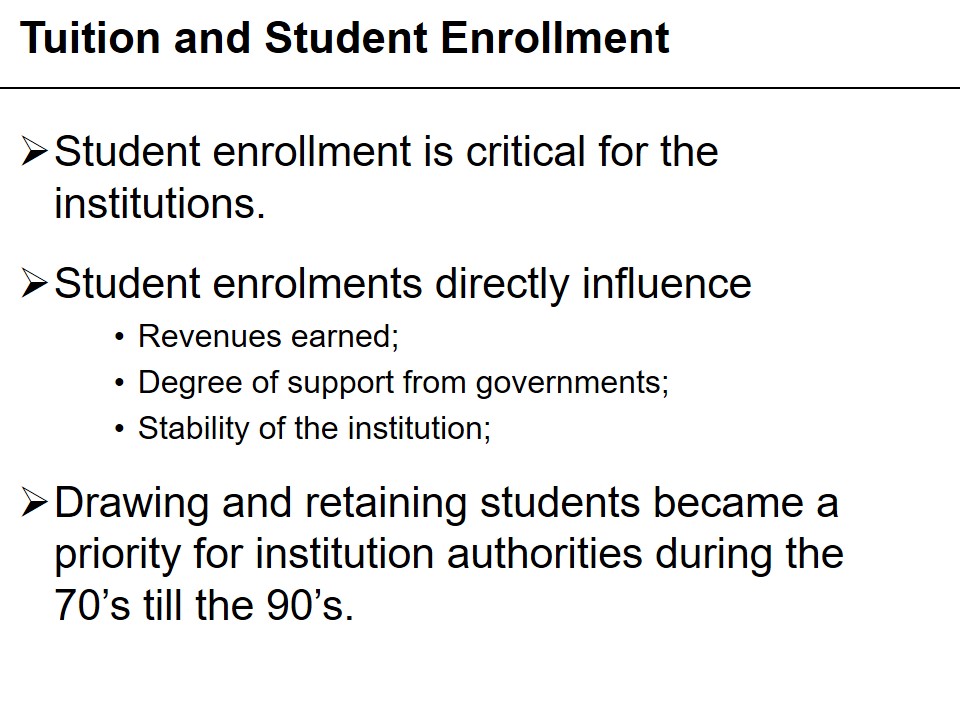
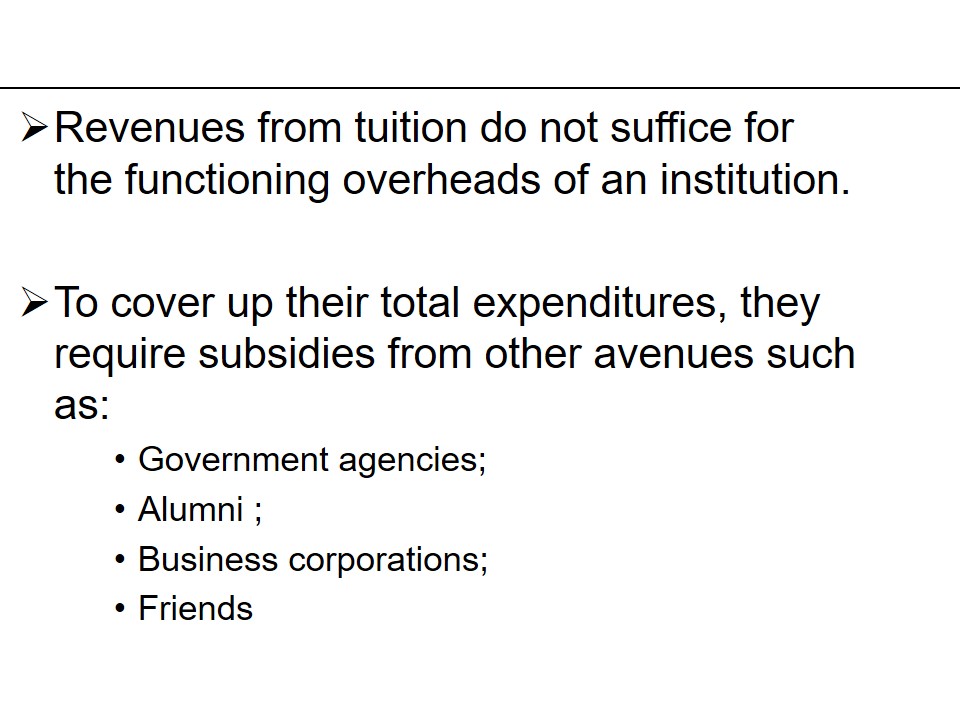
How the upward trend began
- Tuition costs were relatively unwavering during the 1970’s for undergraduate programs.
- The 1980’s witnessed an alteration in the circumstances with costs exhibiting an upward trend.
- During last ten years the tuition and other educational charges have demonstrated an uphill escalation.
- Apprehension about the competence of elite institutes in providing educational scope for the lower and middle income category have been rising.
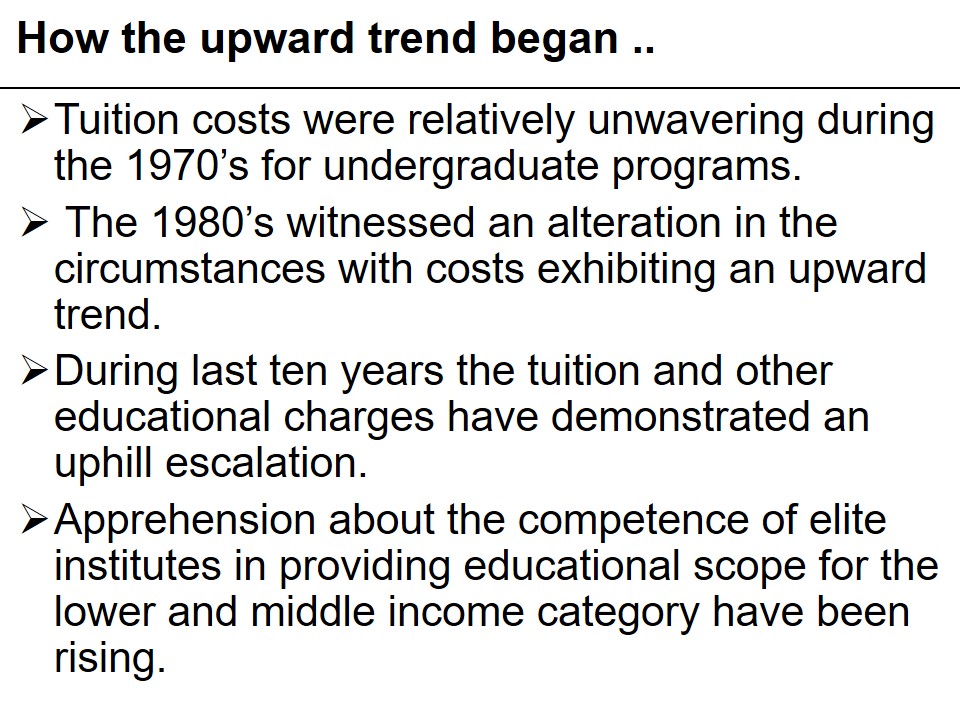
Impact on Education Environment
- Going to prestigious colleges for higher learning, a trend observed in the 60’s, became less fashionable.
- Trends observed during the onset of the 21st century:
- Cheaper two year programs were chosen by numerous students;
- Online learning gained popularity.
- However, positives of this system came out as:
- Better quality standards and common on-campus experiences;
- Enhanced physical amenities in the form of air-conditioning, contemporary recreational conveniences;
- Superior student representation in Unions;
- Improved communication framework used by students and professors by means of computer technology.

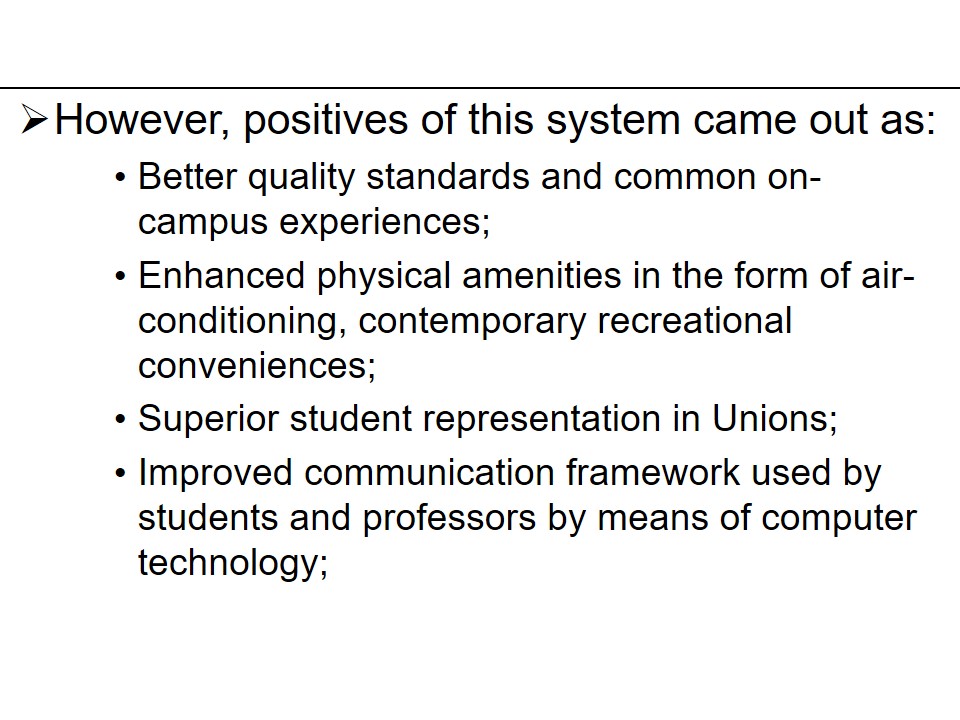
Tuition and income inflation compared
- During late 50’s and early 60’s annual tuition charges accounted for 15.6% of average income per family which stood at 53.3% in 2003.
- Effects:
- Growth of scholarship assistance;
- Fall in number of students paying entire tuition charges;
- However, scholarships do not cover non-tuition charges such as food and lodging which raises the cost of education overall.
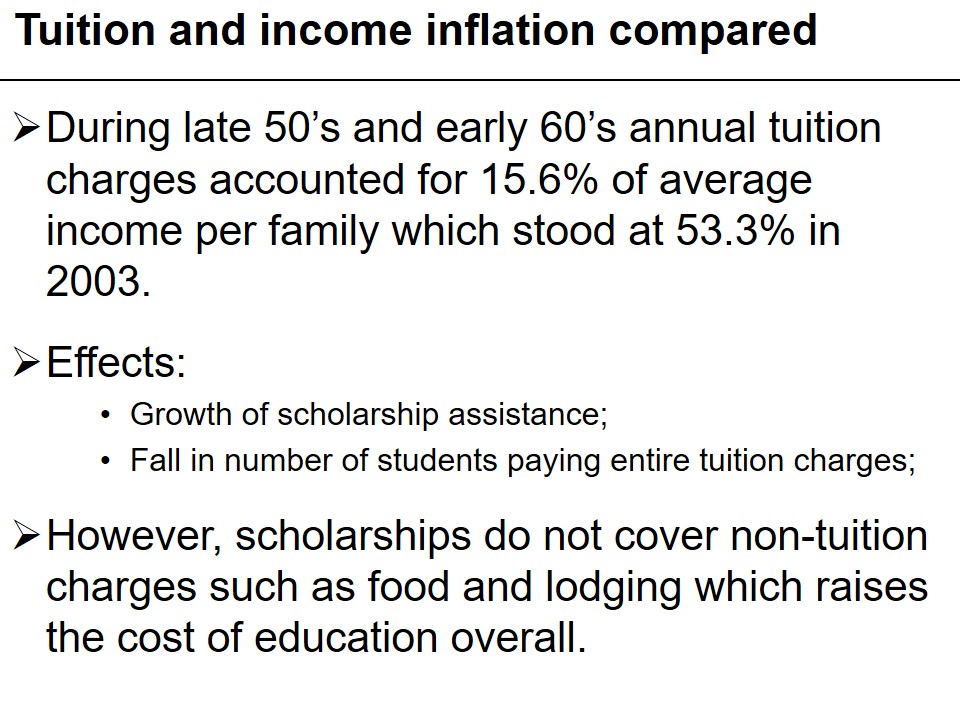
Variations in tuition inflation
- Fluctuations in tuition inflation rate:
- During the 80’s and early 90’s inflation rate was recorded at 5%.
- A fall to about 2% was observed from 1995 to 2001.
- An uphill climb was exhibited subsequently when inflation rates stood at an astonishing 28% from 2001-2004.
- Reasons:
- Higher charges of private colleges;
- Steep tuition costs at research oriented colleges to provide for higher operating costs;
- Increased trends of joining two year programs during the late 90’s explains the fall in inflation rate during that period.
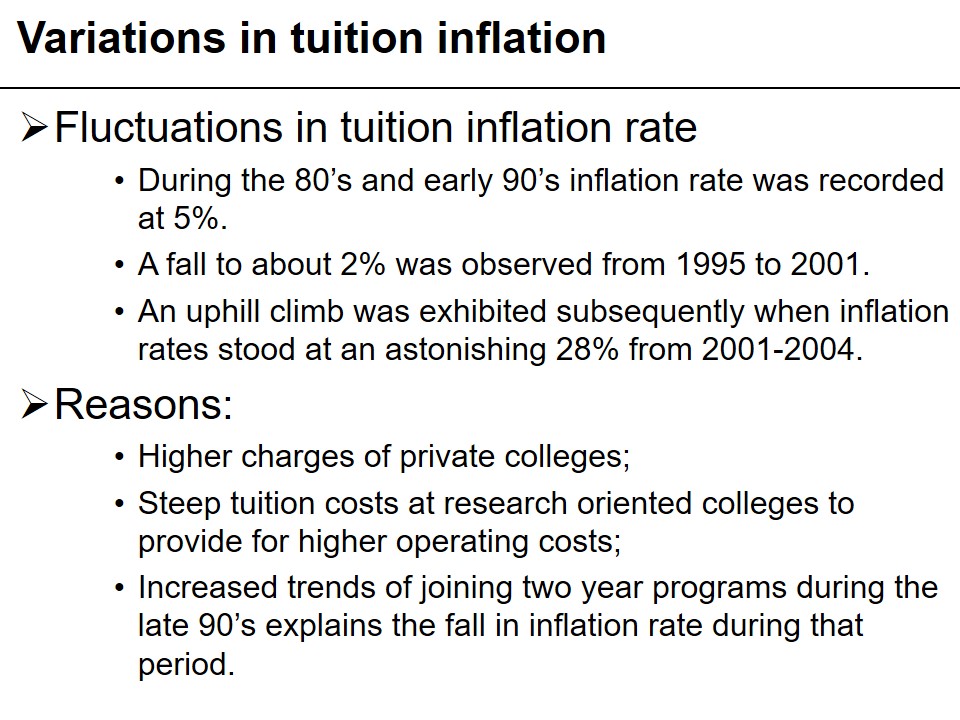
Causes for Tuition Inflation
- Rise in the number of college going people.
- Increased overheads in university colleges.
- Higher Standard of Living index.
- Demand for further education.
- Abridged governmental support.
- Enhanced student endowments.
Rise in the number of college going people:
- Over a long time span number of 18 to 24 year old population has increased excepting for the 70’s and 80’s when there was a sharp fall in that number. This forced universities to reorganize their budgets. However, student enrollment did not cease and thus led to tuition inflation.
Increased overheads in university colleges:
- The pressure to provide better amenities, technological support and staff reimbursements escalate the college budgets which are transformed into increased tuition charges.
Rise in the number of college going people:
- Over a long time span number of 18 to 24 year old population has increased excepting for the 70’s and 80’s when there was a sharp fall in that number. This forced universities to reorganize their budgets. However, student enrollment did not cease and thus led to tuition inflation.
Increased overheads in university colleges:
- The pressure to provide better amenities, technological support and staff reimbursements escalate the college budgets which are transformed into increased tuition charges.
Abridged governmental support:
- Need based support from governmental organizations due to increased health care outlays and competition of colleges amongst each other raise the educational charges as well.
Enhanced student endowments:
- In 2000, roughly 58% of all full-time undergraduates were recipients of some type of assistance. Tax cuts to provide for tuition were granted. Few states, even allowed students to acquire pre-paid loans enough to compensate for semester tuition entirely. Such policies enabled authorities to raise their tuition fees.
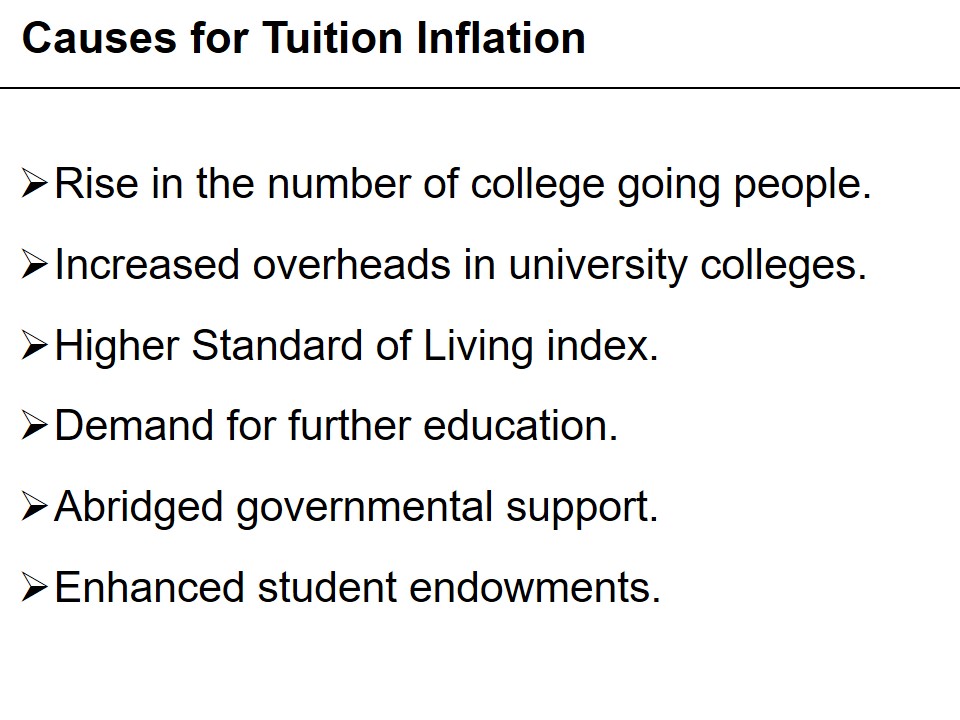
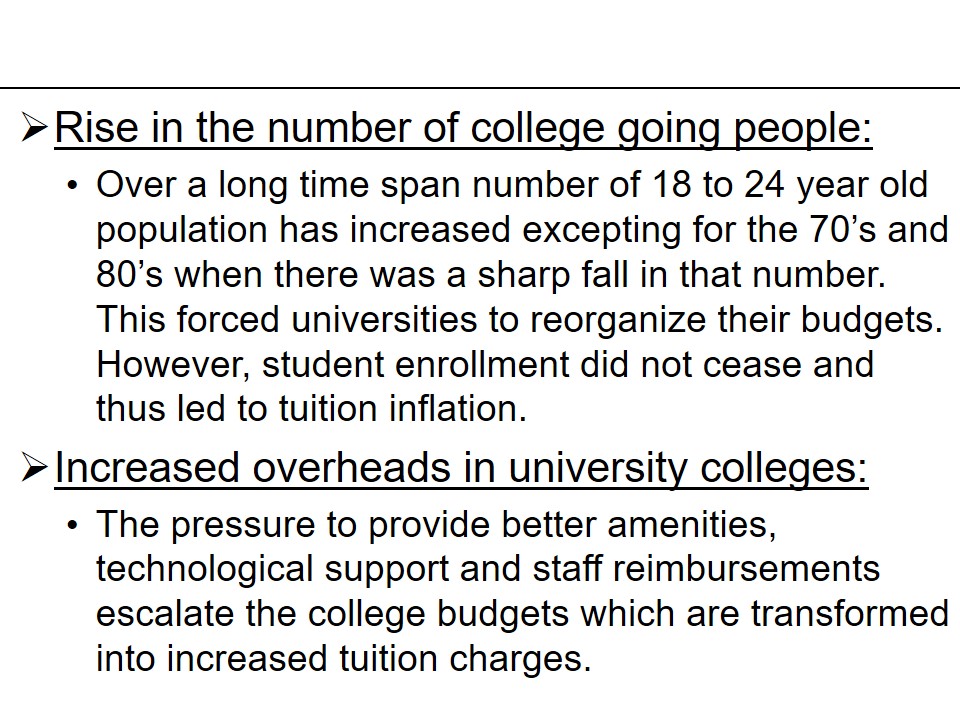
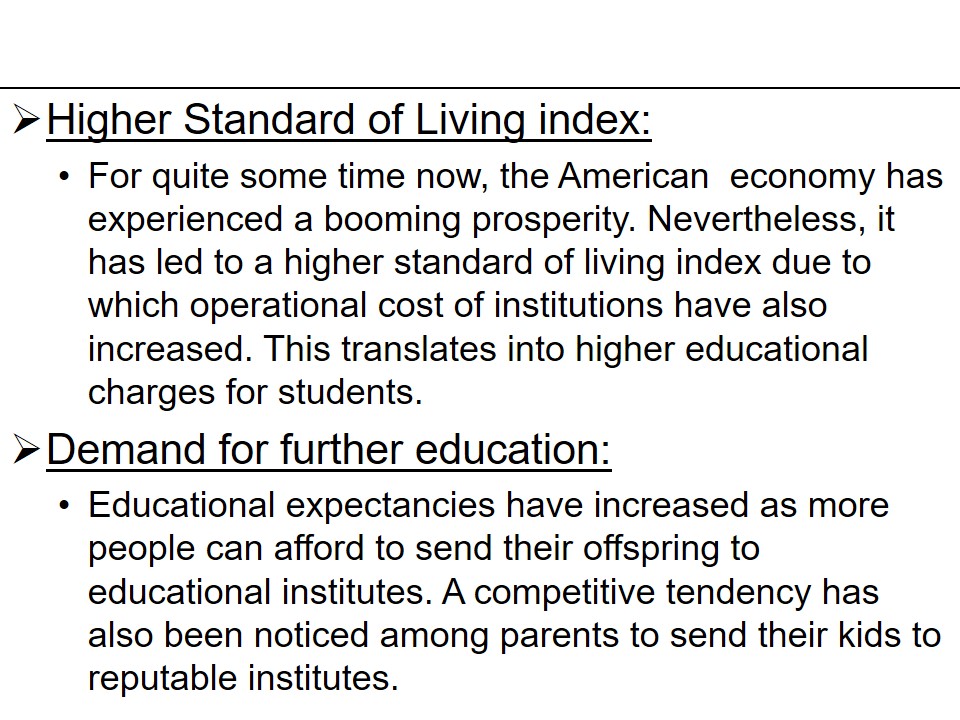
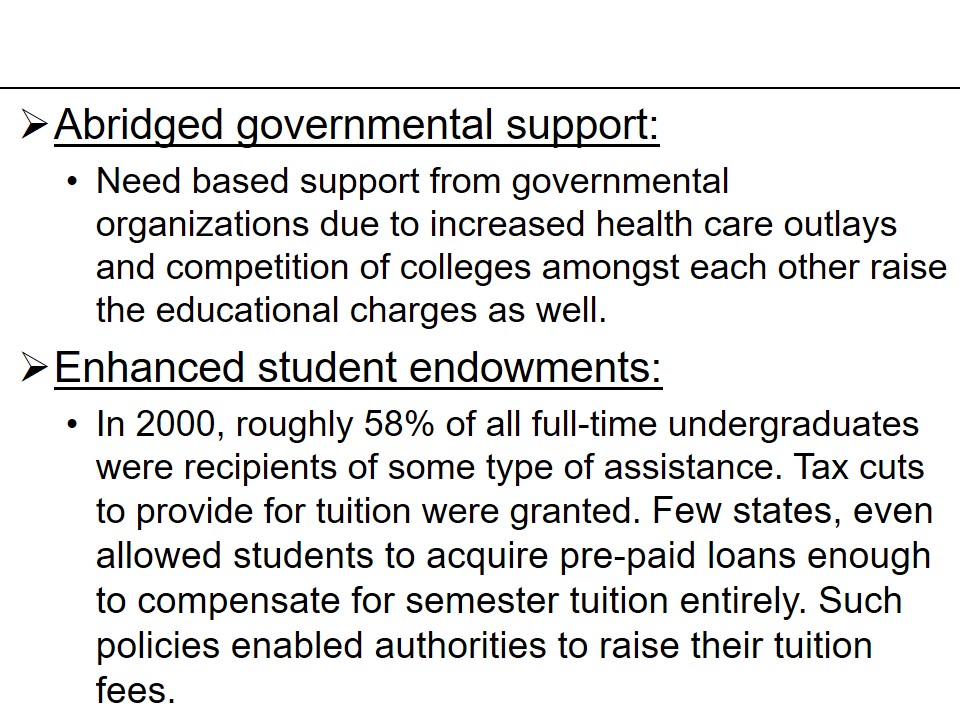
Conclusion
The prolonged nature of tuition inflation has made the issue a major cause for concern and controversies among the American populace.
Tuition inflation has been on a continuous race with the economic inflation of the nation for over three decades.
The intuitive assumption that enrollment rate is effected in a negative manner by inflated tuition costs has also come under the scanner. No direct correlation can be observed between enrollment rate and tuition inflation as it is on the rise when inflation rates drop but at the same time it has exhibited upward inclination even when inflation rates jump. This has made it a controversial issue.
The blame game continues to unfold amongst various congressional members, campus leaders, college authorities and the state government on education policies.
Tuition costs depend on conciliation amongst various parties each of which have their own specific interests. Thus, no entity can be solely blamed for the present adverse situations.
